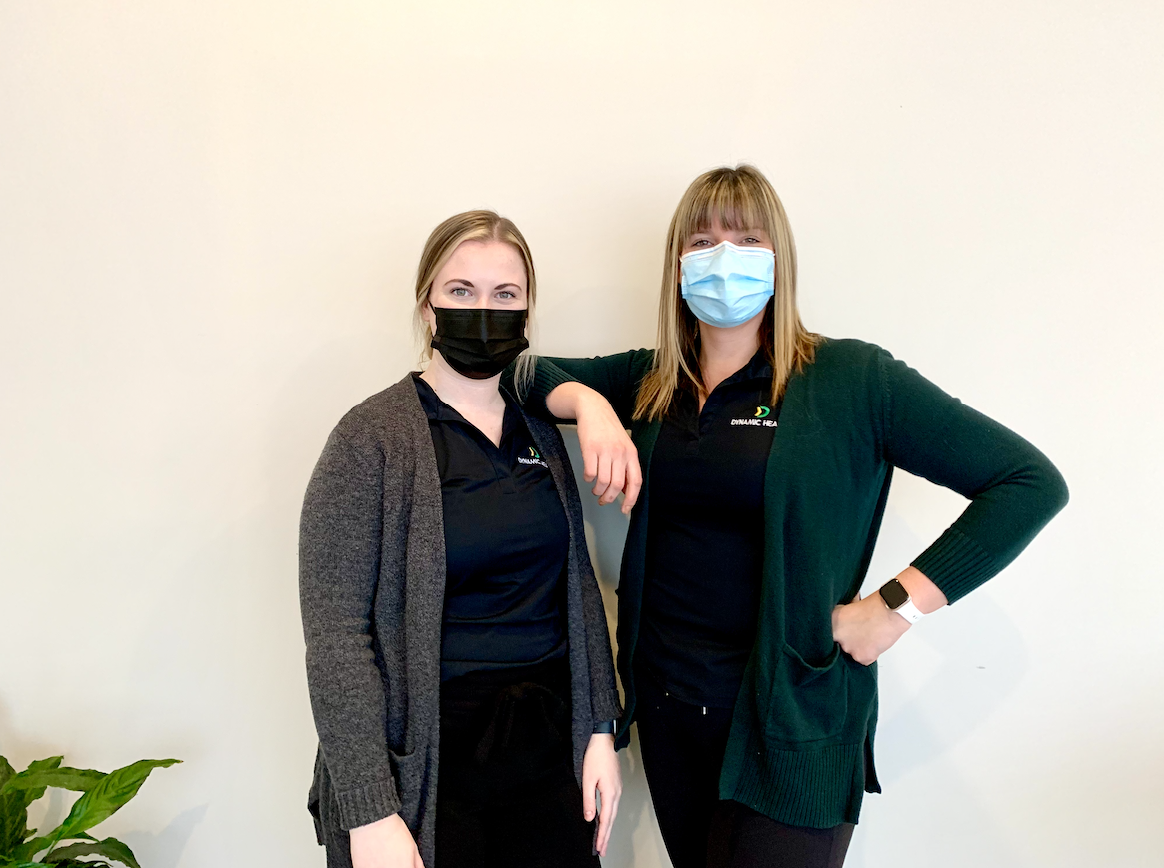Are you tired of struggling with rotator cuff pain that keeps you from enjoying your favorite activities or even just going about your daily routine? If so, you're not alone. Rotator cuff injuries are a common source of shoulder pain, and they can be frustratingly persistent. Thankfully you don't have to let rotator cuff pain hold you back! With the right exercises and a little bit of patience, you can build stronger, healthier shoulders and say goodbye to that nagging pain. Here are five exercises that can help.
What Is Physiotherapy - And How To Start Physiotherapy In Fredericton
Back Pain That Keeps Coming Back – Why We Get Flare-Ups and Exercises to Relieve Lower Back Pain at Home
Back pain and stiffness can start for many different reasons. But once it sets in, what do we do? Often when you are younger, you can rest for a day or two and be back on your feet in no time. Over time, though, it often becomes harder and harder to bounce back from the stiff, sore back in the same way you could before. What causes back pain flare-ups and what can be done to relieve lower back pain, especially at home? Read on to find out!
Is Your Sciatica Pain So Bad You Can’t Walk? Learn what causes sciatica buttock pain and how to get sciatic nerve pain relief at night.
What causes knee pain when walking and bending and how to treat it.
As the weather turns warmer and the days get longer, we collectively come out of hibernation and often make plans to get more active. At the same time, just as you get going, you may start to notice pain or aching in your knees. Most times it comes on without warning and without any known cause.
So what causes knee pain? Why does knee pain start when you start walking or bending your knees more often. And most importantly, how do you treat knee pain so that you can continue to enjoy those longer, warmer summer days?
Cupping- Is it painful?
We get this questions ALL the time when we bring up the topic of cupping. “Will it hurt?”
No, cupping shouldn’t be painful. Cupping can be uncomfortable in certain areas but our goal is not to cause pain while completing this treatment. We are here to help you feel better!
Cupping is something that we offer in clinic as an addition to your treatment. Cupping helps increase blood flow to the area/muscles being worked on, which helps reduce pain, inflammation, muscle tension, relaxation, and can help accelerate recovery.
Where do we use cupping?
Cupping can be used as a treatment option over most muscles in the body. Some areas we commonly use cupping are: low back, shoulders, shoulder blade region, neck, forearms, throughout the large muscles in the legs.
If you think you could benefit from cupping, give us a call! We would love to book you in for an initial assessment!
B a l a n c e
Why is it important to improve your balance?
Balance is so important especially this time of year as the weather heats up and cools down causing icy sidewalks and entryways!
Balance can help prevent falls, improve your posture/strength, improves dynamic trunk control, sitting and standing balance, strengthen self-efficacy in balance control.
How can we improve our balance?
The best way to improve your balance is to practice balance exercises and progress the exercises as your balance gets better.
Exercises you can try!
Narrow stance
Bring your feet together or as close as you can get them together with eyes open. You can progress to eyes closed or standing on a folded towel or a pillow/couch cushion.
Tandem stance
Place one foot directly in front of the other (heel to toe) and start with eyes open. If placing one foot directly in front of the other is too hard you can try staggering steps. Switch feet and practice again.
It is very common to be better on one side compared to the other. You can also progress to eyes closed or standing on a towel/pillow.
Single leg stance
While holding on to something, lift one foot off the ground. Then let go (if you can) and maintain your balance. Repeat on the other foot. Progress the same way as others.
Have these static exercises mastered?
Try a more dynamic exercise!
Tandem walking forward and backward without looking down at your feet. (Trust us when we say it’s way harder than it looks)
The key with balance is if you are unable to keep your balance for at least the first 10 seconds you MUST hold onto a surface with at least 1 finger or else you are not training your balance. Once you are able to maintain your balance without having to touch something for the first 10 seconds you are able to practice without holding on at all.
Why is Physiotherapy SO Important RIGHT NOW?
There is NO time like the present!
If you are anything like us these last 2 years we have been binge-watching Netflix series and making charcuterie boards for supper!
But we need to be reminded that movement, exercise, and mobility are what help keep our bodies from getting sore and injured.
Already feeling the stress of 2 years in a pandemic? Don’t worry, it’s never too late to get started on your physiotherapy journey to feeling healthier, moving better, and getting back to doing the things you love!
Rebecca and Katrina- Physiotherapists
Avoid or prolong the need for surgery -
Especially with COVID19 and the current hospital situation the health of our muscles and joints has never been more important. No one WANTS surgery, but if the need for surgery is in your future, completing physiotherapy prior to undergoing surgery can help the post-surgery recovery/outcomes.
Learning self-management strategies -
Chronic conditions or chronic pain can be managed. The education component of physiotherapy is very important, the more knowledge we have about our injuries/bodies the more empowered we are throughout our recovery/rehabilitation. Education also helps improve confidence when it comes to returning to activities.
Improve strength and mobility through exercise-
During the winter months, we tend to become less active due to the weather limiting our options for physical activities. Physiotherapy can help establish a safe and effective exercise program that can keep you moving and strong throughout the winter months. You can even do a lot of your stretches while you binge the office for the 10th time!
Fall-related injuries –
Physiotherapy can also help if you are experiencing dizziness (such as vertigo) that is affecting your balance or coordination. Winter is a slippery season so improving your balance and coordination can help you prevent a fall.
Pain management-
Many of us have been conditioned to push through the pain! We are here to tell you DO NOT PUSH THROUGH THE PAIN! There are many ways that we can help relieve pain or give you suggestions on positions or activity modifications that may help your pain. Often times Massage Therapy is a great way to help manage pain. We even have a Registered Massage Therapist on staff that might be able to help!
Injury prevention-
Prevention is Key! If we work to prevent an injury first there may no longer be a need for more drastic measures like surgery. Physiotherapy can help to improve your strength, mobility, coordination, and balance to prevent the injury from occurring in the first place. In an ideal world, everyone would visit their physiotherapist for a yearly checkup just like we would with our family physicians.
Recovery from COVID19 –
It has been shown Covid patients may have problems for many weeks or months following recovery. Physiotherapy can help improve your heart and lung health and get you back to feeling more like yourself through education and exercise.
Improves independence –
We all want to have our independence. When that is taken away from us it can feel like a HUGE loss. Physiotherapy can help improve overall strength/mobility to incontinence issues. We can provide a wide variety of services/treatments to help you regain independence in many aspects of life.
Improve pre and postnatal outcomes/recovery -
We can help establish safe and effective exercise programs to help improve pain and mobility before birth and to help facilitate a safe return to activity after birth (for both vaginal and cesarean deliveries).
It all comes down to 1 thing. Physiotherapy is an important part of our daily lives! You need to make sure to take time to invest in our health and wellness so that you can continue to do the things you love and stay happy and healthy!
Rebecca and Katrina - Physiotherapists
Make living a healthy lifestyle, easier!
Vertigo- Symptoms and Treatments
What is Vertigo?
In our inner ears, we have two structures that hold crystals. Sometimes, these crystals can become dislodged and end up in a canal in our inner ear. We have fluid in these canals that help to detect movement of our head. When a crystal is in there it detects more movement than is actually happening and THAT is what causes the dizziness.
Symptoms
Dizziness (varying in severity) can last 30-60 seconds.
Nausea, Caused by the dizzy feeling
Room Spinning
These symptoms are treatable and here is how we do it:
Chat about what might be causing your vertigo.
The majority of cases have no specific cause and can be idiopathic; head trauma or surgical trauma to the inner ear; labyrinthitis/neuritis/migraines that predisposes you to conditions like vertigo
Perform a Dix-Hallpike test.
This test can sometimes be overwhelming to clients but it is the best way to determine if what you are experiencing is vertigo. During this test, you will be seated and your physiotherapist will ask you to look at a spot in the room. They will then ask you to keep your eyes open as they quickly guide you back to a laying position. You will stay in this position for about 30 seconds as the physiotherapist examines your eyes for movement that may indicate if a crystal has been dislodged and you as the client will let your physiotherapist know if you are experiencing any dizziness. Your physiotherapist will guide you back up to a seat and then the test will be repeated on the other side.
Chat about the findings.
You and your physiotherapist will then chat about what the findings were and talk about the possible treatment.
Typically treatment for Vertigo can be done in about 2-3 maneuvers but this is different from case to case.
The treatment of vertigo depends on which canal the crystal is displaced in. Depending on the canal affected there are different maneuvers that are performed to help the crystal return to its original location (in the video linked below the Dix-Hallpike was performed which tests the anterior and posterior canals). The most common type of BPPV is either in the anterior or the posterior canal and is treated with the Epley Maneuver. It usually takes around 3 maneuvers to resolve the symptoms, but sometimes requires more depending on the case. The good news is that usually after a few sessions your physiotherapist can have you feeling pretty good again!















